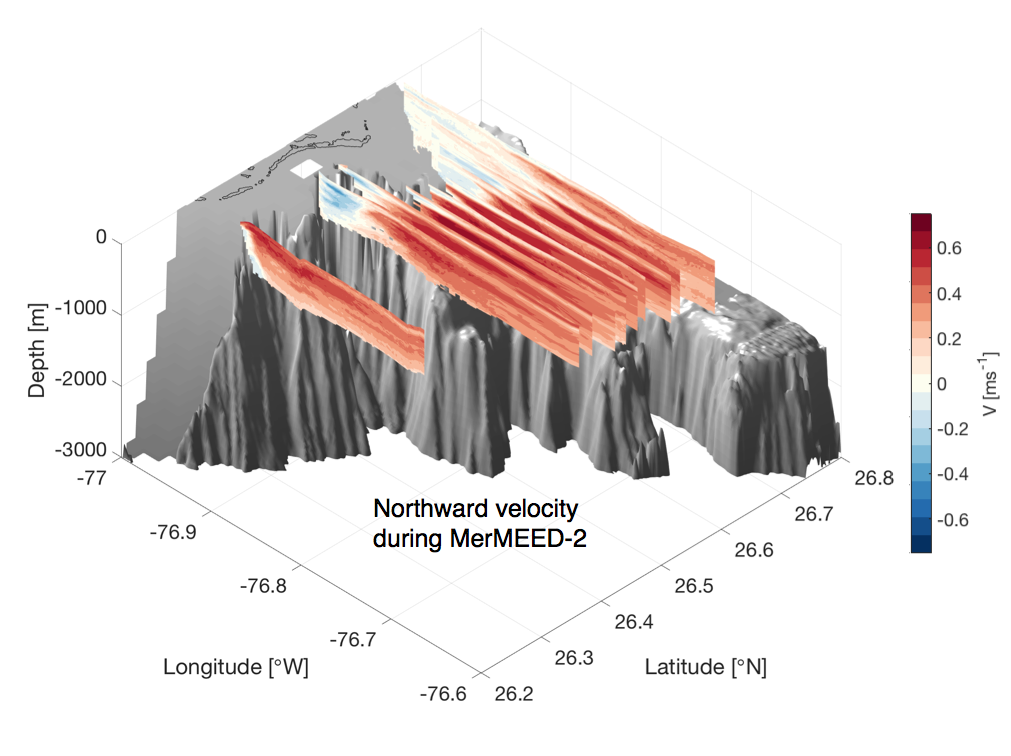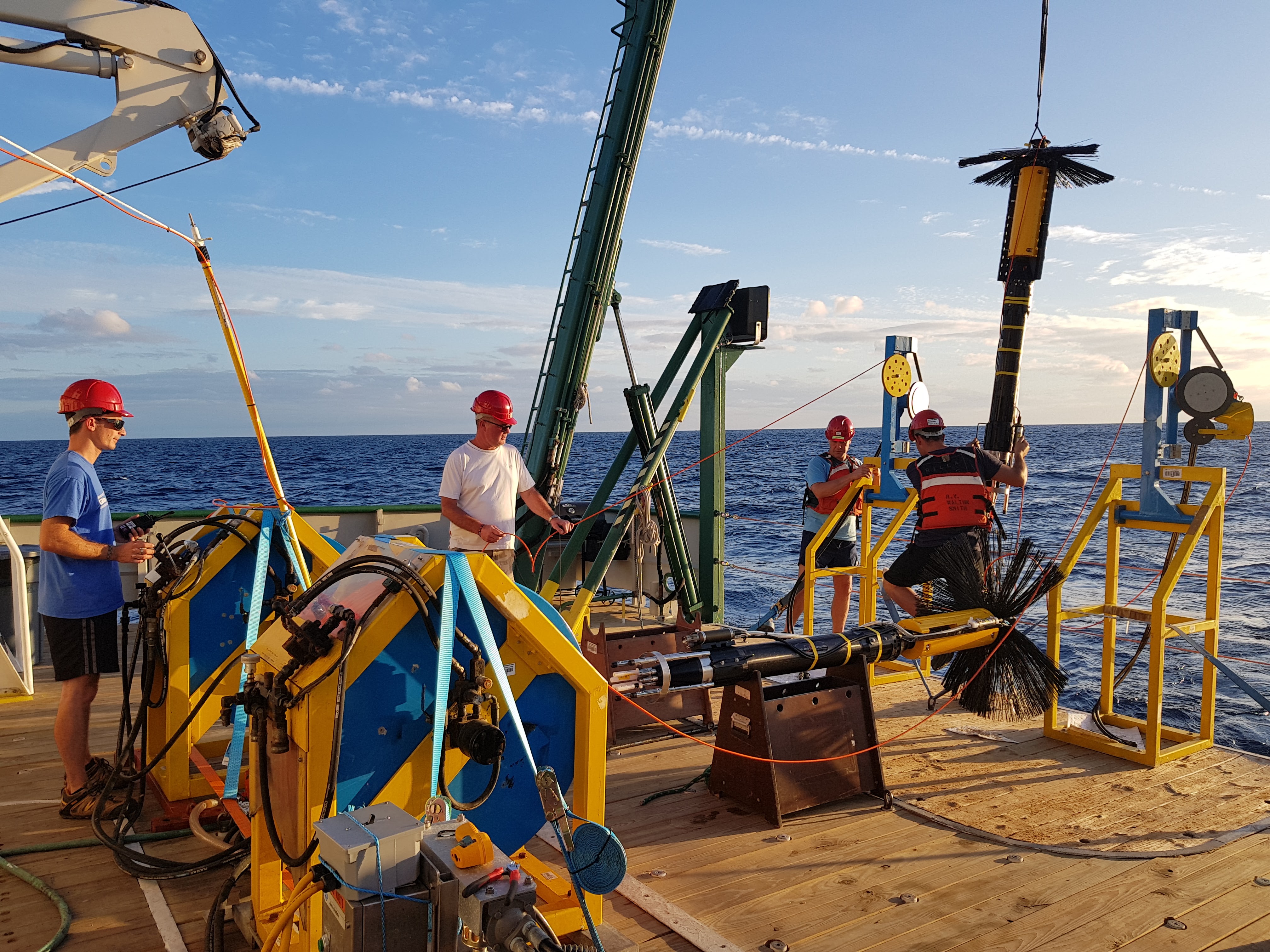Research
Ocean circulation is an intricate balance between the diabatic processes that change water mass properties and the adiabatic processes that move water masses. In observations and models the more subtle diabatic processes like mixing and air–ice–sea interactions are often masked by adiabatic variability driven by wind and eddies. My overarching research vision is to understand how diabatic and adiabatic processes drive the ocean circulation.
The Southern Ocean overturning circulation in thermohaline coordinates
Deep, cold and salty water is drawn to the surface ocean around Antarctica. This is controlled by the combined action of winds blowing over the sea surface and the stirring by large 100‐km eddies. Studying the ocean around Antarctica is notoriously challenging. We therefore have sparse ocean measurements in this region. This limits our understanding of some of the processes involved in the circulation of deep water, notably, a stage involving the warming and freshening of deep water to form intermediate water. Intermediate water plays a key role in drawing excess anthropogenic heat and carbon dioxide from the sea surface into the interior ocean. My recent work shows that the conversion of deep to intermediate water involves a two‐stage “cold transit” that takes place over the course of the austral season. First, during the winter, deep water sits below the very cold and fresh surface water. Ice formation around Antarctica makes this surface water slightly saltier, decreasing the density difference between the deep and surface water. This drives a mixing which cools and freshens the deep water while drawing it to the surface. Second, during summer surface warming and melting sea ice warm and freshen this deep/surface water mixture forming intermediate water.
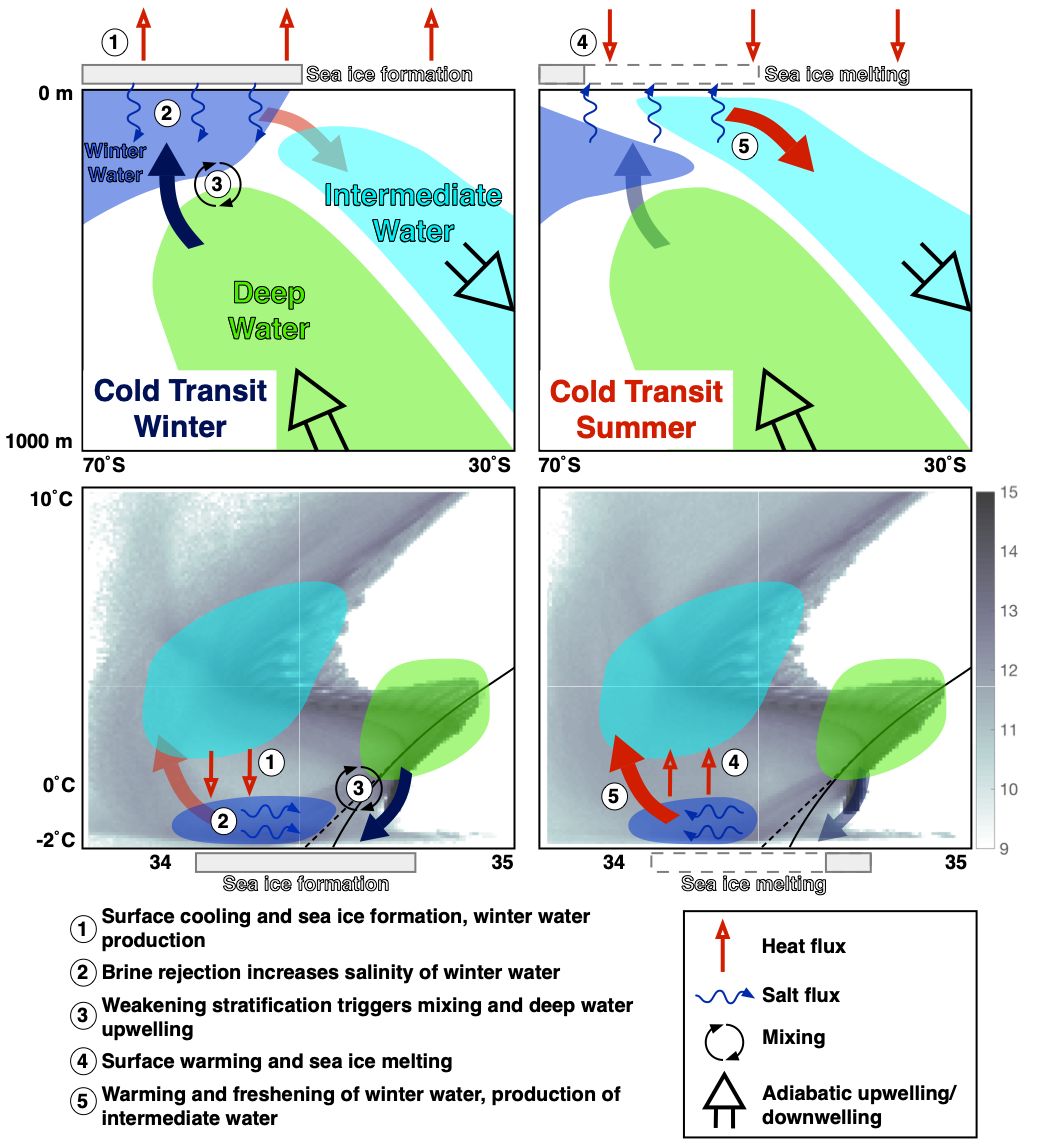
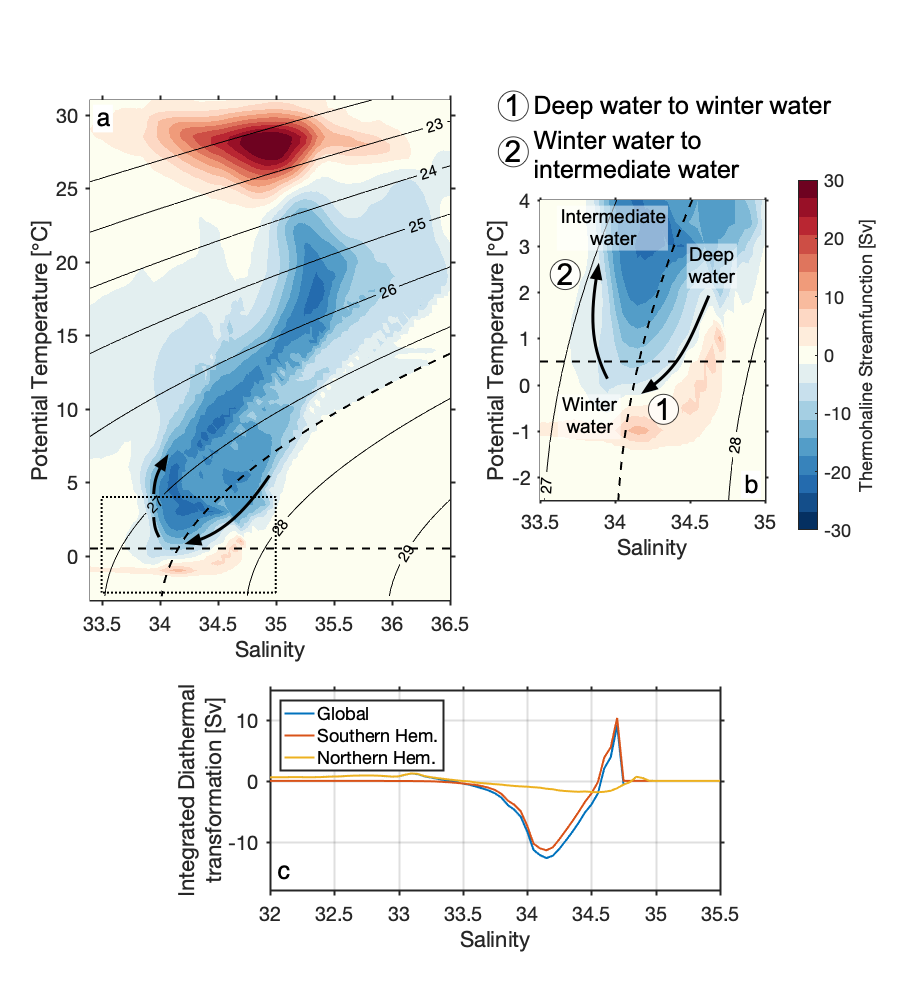
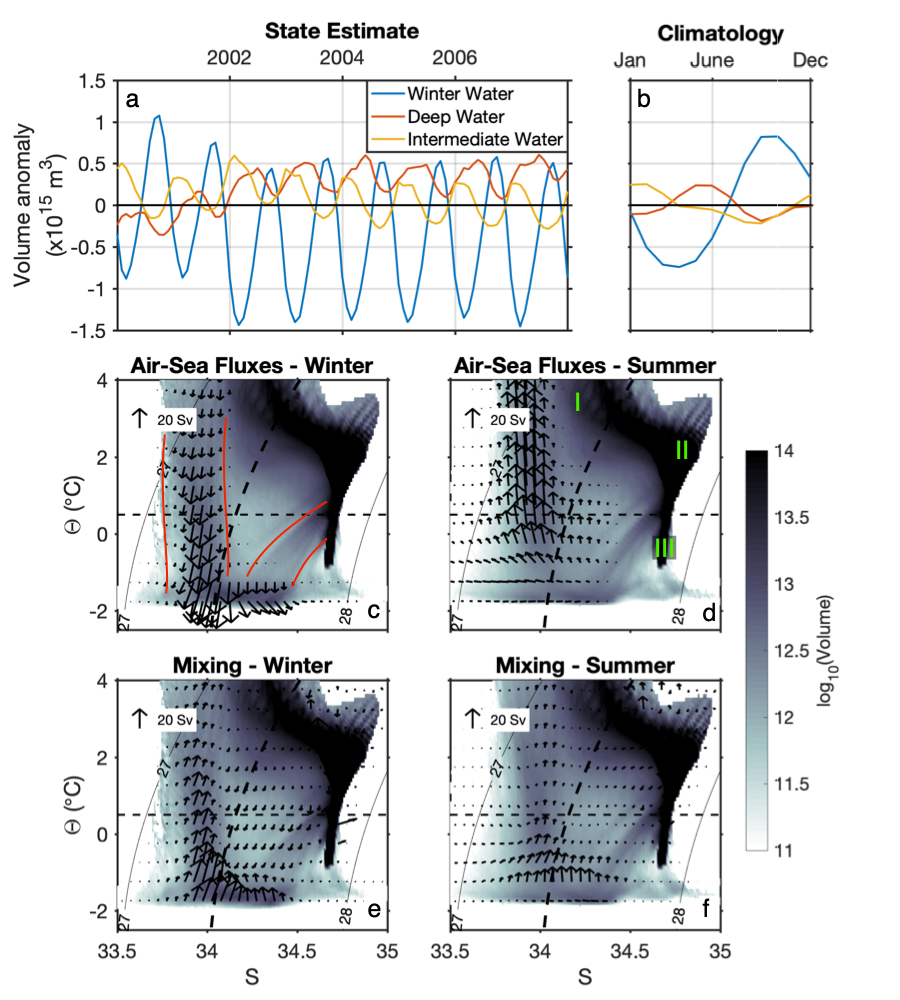
Measuring ocean turbulence
Measuring ocean turbulence is crucial for understanding how heat and carbon dioxide are transferred from the atmosphere to the deep ocean. However, measurements of ocean turbulence are sparse. In a recent paper, we use autonomous Seagliders to estimate turbulence in the surface kilometer of the North Atlantic Ocean. Using an estimate of the vertical water velocity from the flight of the Seaglider through the water, we estimate turbulence by assuming the energy of the largest turbulent fluctuations is representative of the energy dissipated at molecular scales. This approach has been used previously in an ocean region where the vertical gradient of density is small. Our results show that this previous approach fails when the vertical density gradient increases, as it does not account for other processes that are unrelated to turbulence. We introduce a generalized method that isolates only the turbulent processes by accounting for the strength of the vertical density gradient. We show that this new estimate agrees with other turbulence measurements. Our estimate also agrees well with a simple estimates of turbulence from atmospheric processes. This new study therefore presents method that can be applied to existing and new Seaglider data to greatly increase our measurements of ocean turbulence.
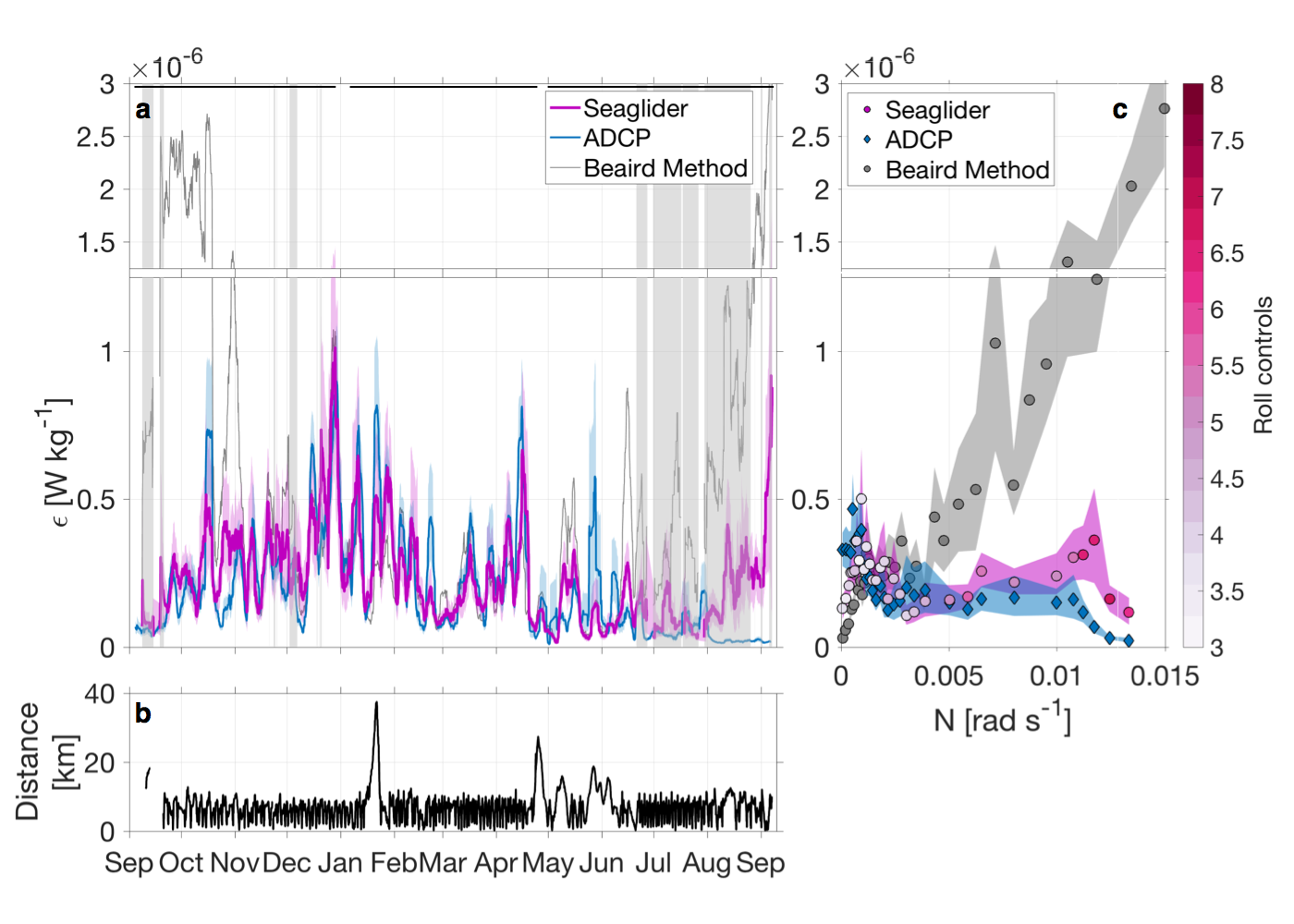
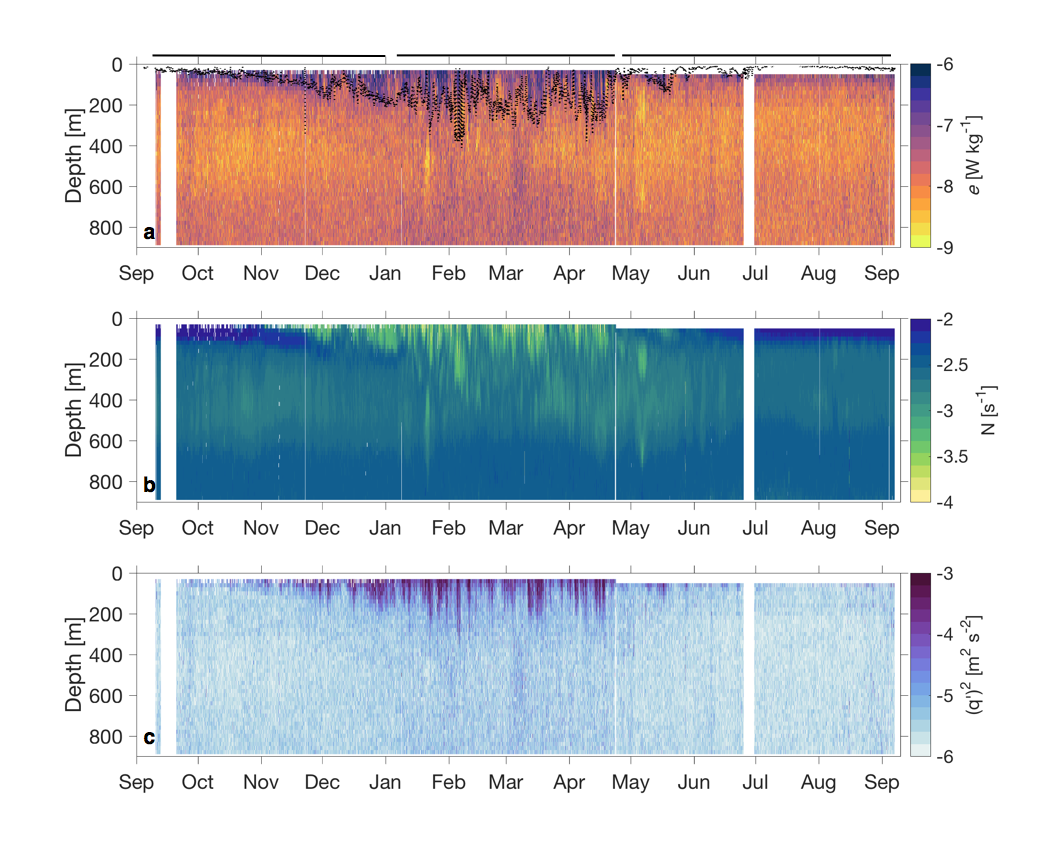

Flow topography interactions
Mesoscale eddies are ubiquitous. They propagate westward and disappear at western boundaries. We are investigating the processes involved in their dissipation through a multi-scale observational study. We have collected data from ship-based microstructure surveys and 18-month moored observations to examine the dissipation of mesoscale eddies impinging on steep topography east of the Bahamas in the Atlantic.
The data shown below was collected as part of the MerMEED project. The MerMEED field programme consists of 3 parts:
- Microstucture cruises targeting specific eddies.
- Glider survey to observe the eddy decay over 6-8 months.
- Enhancement of existing RAPID moorings capturing finescale structure and eddy variability over several years.
Our cruise-based observations show that dissipative processes that act as a sink for eddy energy along the slope, and in further work we will quantify an eddy energy budget in terms of these dissipative processes.

